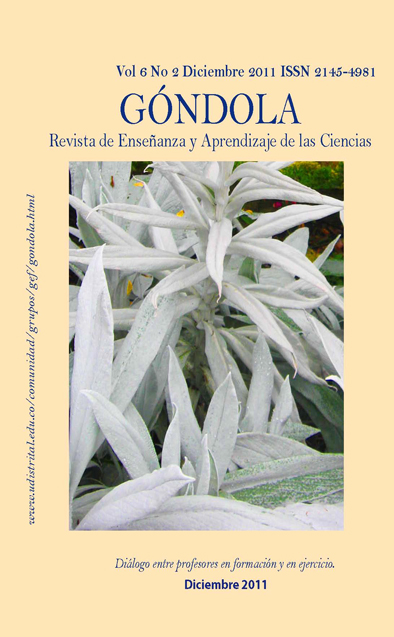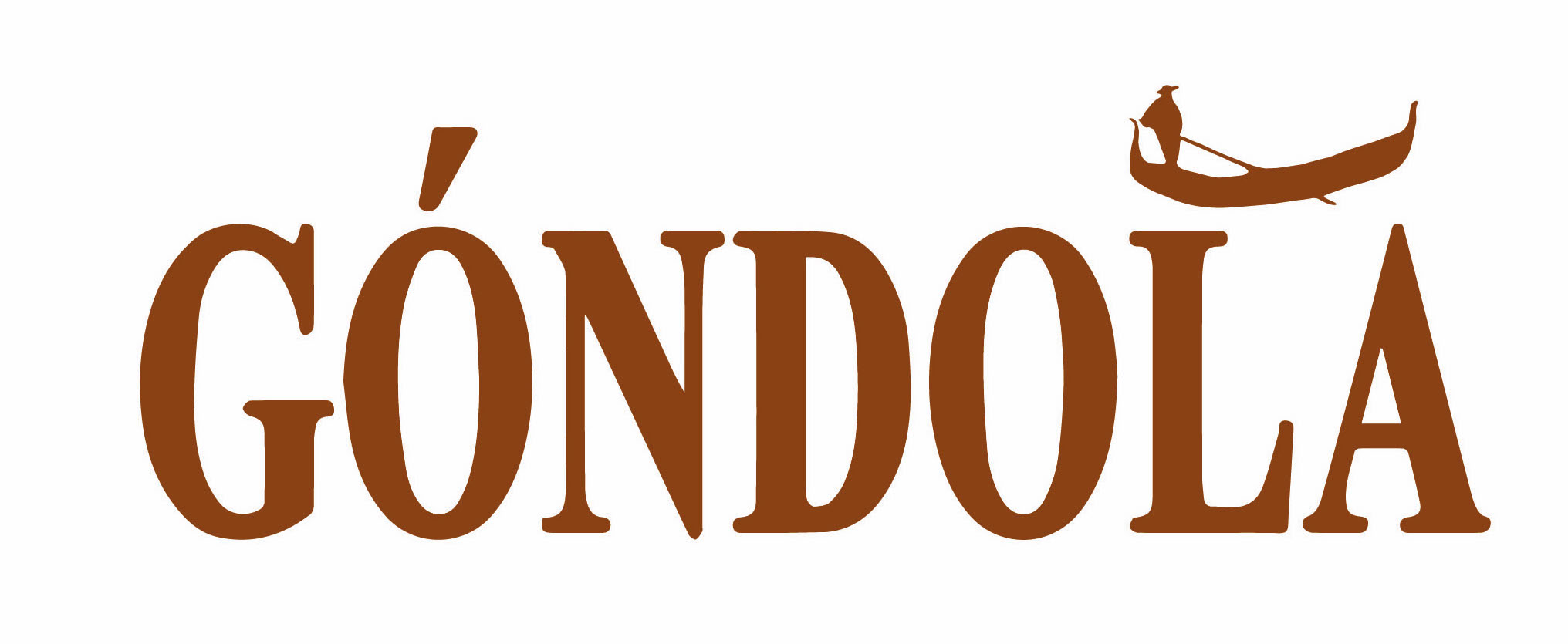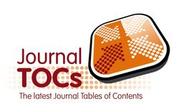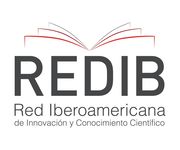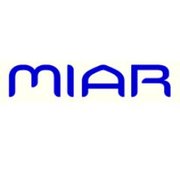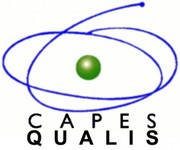DOI:
https://doi.org/10.14483/23464712.5095Publicado:
2014-01-08Deficiência visual e educação científica: orientações didáticas com um aporte na neurociência cognitiva e teoria dos campos conceituais
Visual deficiency and science education: teaching guidance as a contribution in neuroscience cognitive and the theory of conceptual fields
Palabras clave:
Science education, Including school, Semiotics, Conceptual fields theory. (en).Palabras clave:
ensino de ciências, inclusão escolar, semiótica, eoria dos campos conceituais (es).Descargas
Resumen (es)
O objetivo deste artigo é apresentar uma proposta educacional com orientações didático-pedagógicas no Ensino de Ciências para indivíduos com deficiência visual. Para isto utilizamos como principal referencial a Teoria dos Campos Conceituais, de Gérard Vergnaud, conjuntamente com um enfoque translacional, aplicando resultados empíricos da Neurociência Cognitiva. Dentro disto, relevamos o papel de atividades didáticas direcionadas ao que chamamos de ‘alfabetização científica multisensorial’, com foco na tríade lingüística: leitura, interpretação e representação textual. Esperamos que as diretivas aqui apresentadas constituam-se futuramente em orientações para compor um ‘protocolo semiótico’ para o Ensino de Ciências, destacando as especificidades e singularidades epistemológicas, didáticas e pedagógicas desta área, e relevando tais propriedades na forma de construtos cognitivos próprios para a educação científica e tecnológica.
Resumen (en)
The aim of this paper is to present an educational proposal with didactic and pedagogical orientations, to the Science Education for people with visual impairments. Then, we use as the main reference, Gérard Vergnaud theory of Conceptual Fields, joining with a translational focus, applying empirical results of Cognitive Neuroscience. Within this, we highlight the role of educational activities related to 'multi-sensorial scientific literacy’, focusing on the linguistic triad: read, interpretation and textual representation. We hope this perspective, become in the future an important component of guidelines for composing a ‘semiotic protocol’ for Science Education. Realizing too, epistemological peculiarities, pedagogic and didactic specificities in this area, and, revealing such properties on the cognitive constructs, for science and technology education.
Referencias
ALEMAN, A., VAN LEE, L., MANTIONE, M., VERKOIJEN, I. & DE HAAN, E. H. D. Visual Imagery Without Visual Experience: Evidence from Congenitally Totally Blind People. NeuroReport (12) 2601-2604. 2001.
AMEDI, A.; FLOEL, A.; KNECHT, S.; ZOHARY, E.; COHEN, L.G. Transcranial magnetic stimulation of the occipital pole interferes with verbal processing in blind subjets. Nature Neuroscience. V.7, N.11, November, 2004.
AMEDI, A.; MALACH, R.; HENDLER, T.; PELED, S.; ZOHARY, E. Visuo-haptic object-related activation in the ventral visual pathway. Nature Neuroscience. V.4, N.3, March, 2001.
AMEDI A, RAZ N, PIANKA P, MALACH R, ZOHARY E. Early ‘visual’ cortex activation correlates with superior verbal memory performance in the blind. Nature Neuroscience, 6(7), p.758-66, 2003.
AMEDI, A.; von KRIGSTEIN, K.; van ATEVELDT, N.M.; BEAUCHAMP, M.S.; NAUMER, M.J. Functional imaging of human crossmodal identification and object recognition. Exp.Brain Research. 166, p. 559-571, 2005.
ARDITI, A., HOLTZMAN, J. D., & KOSSLYN, S. M. Mental Imagery and Sensory Experience in Congenital Blindness. Neuropsychologia (26), p.1-12. 1988.
BECK-WINCHATZ, B., OSTRO, S. J. Using Asteroid Scale Models in Space Science Education for Blind and Visually Impaired Students. The Astronomy Education Review, v.2, n.2., p.118-126, 2003.
BÉRTOLO, H; PAIVA, T. Conteúdo visual em sonhos de cegos. Psicologia, Saúde e Doenças. II(1). 2001.
BOUYER, G.C. Ergonomia cognitiva e mente incorporada. São Paulo: Blucher Acadêmico, 2008.
BRONCKART, J-P. Atividade de linguagem, textos e discursos – por um interacionismo sociodiscursivo. 2.ed. São Paulo: Educ, 2009.
CAMARGO, E.P.de. Ensino de óptica para alunos cegos: possibilidades. Curitiba: Editora CRV, 2011.
CAMARGO, E.P. de. O ensino de física no contexto da deficiência visual: elaboração e condução de atividades de ensino de física para alunos cegos ou com baixa visão. Universidade Estadual de Campinas. Departamento de Educação. Tese de doutorado. Orientador: Dirceu da Silva, 2005.
CAMARGO, E.P.de, VIVEIROS, E.R.de Pressupostos e critérios pedagógicos para uma prática inclusiva para o ensino de física. In: Docência e formação de Professores na Educação Superior: múltiplos olhares e múltiplas perspectivas. Organizadores: Armindo Quillici Neto e Sílvia Ester Orrú. Curitiba: Editora CRV, 2009.
CHOI BCK, PAK AW. Multidisciplinarity, interdisciplinarity, and transdisciplinarity in health research, services, education and policy: 3. Discipline, inter-discipline distance, and selection of discipline. Clin Invest Med.;31: E41-48. 2008
CHOI BCK, PAK AWP. Multidisciplinarity, interdisciplinarity and transdisciplinarity in health research, services, education and policy: 2. Promotors, barriers, and strategies of enhancement. Clin Invest Med.;30:E224-32. 2007
CHOI BCK, PAK AWP. Multidisciplinarity, interdisciplinarity and transdisciplinarity in health research, services, education and policy: 1. Definitions, objectives, and evidence of effectiveness. Clin Invest Med.; 29:351-64. 2006
COLIN, V. Images mentales et déficience visuelle: Ecrits psychomoteurs. Evolutions psychomotrices, n. 65,141-146. 2004.
CUNNINGHAM, C. Science, technology and math issues for k-12 students with disabilities. Information Technology and Disabilities E-Journal. V. IV, n. 4, 1997.
DAS, A.; FRANCA, J.G.; GATTASS, R.; KAAS, J.H.; NICOLELIS, M.A.L.; TIMO-IARIA, C.; VARGAS, C.D.; WEINBERGER, N.M.; VOLCHAN, E. The brain decade in debate: VI. Sensory and motor maps: dynamics and plasticity. Brazilian Journal of Medical and Biological Research. 34: 1497-1508, 2001.
DE GELDER, B.; TAMIETTO, T.; VAN BOXTEL, G.; GOEBEL, R.; HAHRAIE, S.; VAN DEN STOCK, J.; STIENEN, B.M.C.; WEISKRANZ, L.; PEGNA, A. Intact navigation skills after bilateral loss of striate cortex. Current Biology, 18 (24), 1128-1129, 2008.
DEHAENE, S. Precis of the number sense. Mind & language. V.16, n.1, p.16-36, 2001.
DEHANE, S.; CHANGEUX, J-P. Development of elementary numerical abilities: A neuronal model. Journal Cognitive Neuroscience, 5:390--407, 1993.
DEHAENE, S; COHEN, L ;SIGMAN, M; VINCKIER, F. The neural code for written words: a proposal. Trends in Cognitive Sciences 9(7). 2005.
DEHAENE, S.; DEHAENE-LAMBERTZ, G.; COHEN, L. Abstract representations of numbers in the animal and human brain. Trends Neuroscience, 21, p.355–361, 1998.
DEHAENE, S., MOLKO, N., COHEN, L., WILSON, A.J. Arithmetic and the brain. Current Opinion in Neurobiology, N.14: p.218–224, 2004.
DEHAENE, S.; PIAZZA, M.; PINEL, P.; COHEN, L. Three parietal circuits for number processing. Cognitive Neuropsychology. 20(3/4/5/6), p.487-506, 2003.
DEHAENE, S; SPELKE, E;PINEL, P; STANESCU, R; TSIVIKIN, S. Sources of Mathematical Thinking: Behavioral and Brain-Imaging Evidence. Science, 284, 970, 1999.
DUVAL, R. Ver e ensinar a matemática de outra forma – entrar no modo matemático de pensar: os registros de representações semióticas. 1.ed. Organização Tânia M.M. Campos. Tradução Marlene Alves Dias. São Paulo: PROEM, 2011.
DUVAL, R. Semiósis e pensamento humano – registros semióticos e aprendizagens intelectuais. Tradução Lênio Fernandes Levy e Marisa Roâni Abreu da Silveira. 1.ed. São Paulo: Livraria Editora da Física, 2009.
ERICSSON, K. A., SIMON, H. A. Verbal reports as data. Psychological Review, 87, p.215-251, 1980.
GARDNER, John A. Tactile Graphics: an overview and resource guide. (Science Access Project, Department of Physics, Oregon State University). Information Technology and Disabilities E-Journal. v. III, n.4, December,1996.
GAUNET, F.; THINUS-BLANC, C. Les représentations spatiales chez Le déficient visuel : apprendre à apprendre l'espace. Enfance et cécité. [Dossier]. - Empan, n. 23, 62-64. septembre 1996.
GINDIS, B. The social cultural implication of disability – Vygotsky paradigm for special-education. Educational Psychologist. V.30, n.2, p.77-81, 1995.
GRADY, C.A.; FARLEY, N.; ZAMBONI, N.;AVERY, F.; CLARK, B.; GEIGER, N.;WOODGATE, B. Accessible Universe: Making Astronomy Accessible to All in the Regular Elementary Classroom. The Astronomy Education Review. v.2, n.2, p.1-19, 2003.
GRUSH, R. The Emulation Theory of Representation: Motor Control, Imagery, and Perception. Behavioral And Brain Sciences, 27 (3):377-396. 2004.
HOC, J.M., & Amalberti, R. Analyse des activités cognitives en situation dynamique: dun cadre théorique à une méthode. Le Travail Humain, 62, 97-130. 1999.
HOC J.-M. Supervision et Contrôle de Processus. La cognition en Situation Dynamique, Series Sciences et Technologies de la Connaissance, Presses Universitaires de Grenoble.1996.
HOFSTADTER, D.R. Gödel, Escher, Bach: an eternal golden braid. Mew York: Basics Book, 1999.
HOLLINS, M. Styles of mental imagery in blind adults. Neuropsychologia. 23(4):561-6, 1985.
HWANG H.J.; KWON K, IM C.H. Neurofeedback-based motor imagery training for brain-computer interface. Journal Neuroscience Methods.179(1).2009.
KENNEDY J. M.; JURICEVIC, I. Foreshortening, convergence and drawings from a blind adult. Perception, 35(6) 847 – 851, 2006.
KNAUFF, M. ; MAY, E. Mental imagery, reasoning, and blindness. The Quarterly Journal of Experimental Psychology, v.59, 161 – 177, January 2006.
KNOPS, A; THIRION, B; HUBBARD, EM; MICHEL, V; DEHAENE, S. Recruitment of an Area Involved in Eye Movements During Mental Arithmetic. Scienceexpress, 7 may 2009.
KOSSLYN, S. M.; BEHRMANN, M.; JEANNEROD, M. The cognitive neuroscience of mental imagery. Neuropsychologia, v. 33, n. 11, 1335-1344, November 1995.
KOSSLYN, S. M., THOMPSON, W. L., KIM, I. J., ALPERT, N. M. Topographical representations of mental images in primary visual cortex. Nature, 378, 496-498. Reprinted in M. S. Gazzaniga (Ed.), (2000), Cognitive Neuroscience: A Reader. Malden, MA: Blackwell Publishers, Inc, 1995.
KOSSLYN, S. M.; ALPERT, N. M.; THOMPSON, W. L.; MALJKOVIC, V.; WEISE, S. B.; CHABRIS, C. F.; HAMILTON, S. E.; RAUCH, S. L.; BUONANNO, F. S. Visual-mental imagery activates topographically-organized visual cortex: PET investigations. Journal of Cognitive Neuroscience, 5, 263–287. 1993.
KUCERA, T.J. Teaching chemistry to students with disabilities. Information Technology and Disabilities E-journal Rochester Institute of Technology. ISBN 0-8412-2734-9. December, 18, 1996.
KUMAR, David D.; STEFANICH, Greg. P.;RAMASAMY, Rangasamy. Science for Students with Visual Impairments: Teaching Suggestions and Policy Implications for Secondary Educators. Electronic Journal of Science Education. V.5 , n. 3 , March 2001.
LAMBERT, S; SAMPAIO, E; MAUSS, Y; SCHEIBER, C. Blindness and brain plasticity: contribution of mental imagery? An fMRI study. Brain Research. Cognitive, 20(1):1-11, 2004.
MERABET, L.B.; SWISHER, J.D.; McMAINS, S.A.; HALKO, M.A.; AMEDI, A.; PASCUAL-LEONE, A.; SOMERS, D. Combined activation and deactivation of visual cortex during tactile sensory processing. Journal or Neurophysiology. V.97, February, 2007.
MOREIRA, M. A. A teoria dos campos conceituais de Vergnaud, o ensino de Ciências e a pesquisa nesta área. Investigações em Ensino de Ciências, V.7, n. 1, 2002.
MUTHUKUMARASWAMY, SD; SINGH, KD. Modulation of the human mirror neuron system during cognitive activity. Psychophysiology. 45(6): 2008.
NEUPER, C; SCHERER, R; WRIESSNEGGER, S; PFURTSCHELLER, G. Motor imagery and action observation: modulation of sensorimotor brain rhythms during mental control of a brain-computer interface. Clinical Neurophysiology.120(2).2009.
NEUPER C, SCHERER, R; REINER, M; PFURTSCHELLER, G. Imagery of motor actions: differential effects of kinesthetic and visual-motor mode of imagery in single-trial EEG. Brain Res Cogn Brain Res.25(3).2005.
NEWELL, F.N., BÜLTHOFF, H., ERNST, M.O. Cross-Modal Perception of Actively Explored Objects. in: H.S. Oakley, & S. O'Modhrain (Eds.), Proceedings EuroHaptics 2003. Dublin, Ireland: Trinity College Dublin, 291 – 299, 2003.
NICOLELIS, M. Beyond boundaries: the new neuroscience of connecting brains with machines – and how it will change our lives. New York: Times Book, 2011.
NICOLELIS MAL, CHAPIN JK. Controlling robots with the mind. Scientific American, 287, p.24-31, October 2002.
NICOLELIS, M., LEBEDEV, M.A. Principles of neural ensemble physiology underlying the operation of brain–machine interfaces. Nature Reviews Neuroscience, 10, 530-540 (July) | doi:10.1038/nrn2653. 2009
OECD. First High-Level Forum on Learning Sciences and Brain Research: Potential Implications for Education Policies and Practices: Brain Mechanisms and Early Learning, Sackler Institute, New York, June 16–17, organized by the OECD. 2000.
PASCUAL-LEONE, A.; AMEDI, A.; FREGNI, F.; MERABET, L.B. The Plastic Human Brain Cortex Publisher: Annual Review of Neuroscience, 28:377-401, 2005.
PASTRÉ, P., MAYEN, P., VERGNAUD, G. La didactique professionnelle. Revue française de pédagogie. N.154, 2006.
PEIRCE, C.S. Semiótica. Tradução José Teixeira Coelho Neto, 3.ed., São Paulo: Perspectiva, 2000.
PIATELLI-PALMARINI, M. Teorias da linguagem, teorias da aprendizagem: o debate entre Jean Piaget e Noam Chomsky. Organizado e compilado por Massimo Piatelli-Palmarini. Tradução de Álvaro Cabral. São Paulo: Cultrix: Editora da Universidade de São Paulo, 1983.
PIAZZA, M.; IZARD, V.; PINEL, P.; LE BIHAN, D.; DEHAENE, S. Tuning Curves for Approximate Numerosity in the Human Intraparietal Sulcus. Neuron, Vol. 44, 547–555, October 28, 2004.
PICARD, R. Affective Computing. Cambridge, MA: The MIT Press, 1997.
PINEDA JA, BRANG D, HECHT E, EDWARDS L, CAREY S, BACON M, FUTAGAKI C, SUK D, TOM J, BIRNBAUM C, RORK A. Positive behavioral and electrophysiological changes following neurofeedback training in children with autism. Research in Autism Spectrum Disorders , 2. 557-581. 2008.
PINEL, P.; PIAZZA, M.; LE BIHAN, D.; DEHAENE, S. Distributed and Overlapping Cerebral Representations of Number, Size, and Luminance during Comparative Judgments. Neuron, V. 41, p.1–20, March 25, 2004.
PINKERS, S. A computational theory of the mental imagery medium. NATO advanced research workshop on imagery and cognition, n. 42, 17-32, 1988.
PREECE, J.; ROGERS, I.; SHARP, H. Design de Interação: Além da Interação Humano-Computador; Porto Alegre: Bookman, 2007.
PYLYSHYN, Z.W. Things and places – how the mind connects with the world. Cambridge: A Bradford Book/MIT Press, 2007.
PUNIE, Y. A social and technological view of Ambient Intelligence in Everyday Life: what bends the trend? European Media, Technology and Everyday Life Research Network. European Commission (EMTEL), 2003.
QIAO, E.T. Bases cérébrales de la lecture des mots manuscrits : Etude comportementale et en IRM fonctionnelle. Master de Sciences Cognitives. EHESS/ENS/Université PARIS 5. 2007.
RAZ, N; AMEDI, A; ZOHARY, E. V1 Activation in Congenitally Blind Humans is Associated with Episodic Retrieval. Cerebral Cortex,15(9).2005.
RAYNARD, F. Se mouvoir sans voir. Education et rééducation fonctionnelle des aveugles et des malvoyants. Éditions : Corcelles-le-Jorat (Suisse) : Yva Peyret, 1991.
REGO-MONTEIRO, P., MANHÃES, L.P., KASTRUP, V. Questões Acerca da Teoria da Compensação no Campo da Deficiência Visual. Revista Benjamin Constant, n.36, Abril, 2007.
ROGERS S.J.; HEPBURN, S.L.; STACKHOUSE, T.; WEHNER, E. Imitation performance in toddlers with autism and those with other developmental disorders. Journal of Child Psychology and Psychiatry and allied disciplines. 44:763–781, 2003.
ROS, T.; MUNNEKE, M.A.M.; DIANE, R.; GRUZELIER, J. H.; ROTHWELL, J. C. Endogenous control of waking brain rhythms induces neuroplasticity in humans European Journal of Neuroscience.31(4).2010.
SADATO, N.; PASCUAL-LEONE, A.; GRAFMAN, J.; DEIBER, M.P.; IBAÑEZ, V.; HALLETT, M. Neural networks for Braille reading by the blind. Brain, 121, 1213-1229, 1998.
SADATO, N.; PASCUAL-LEONE, A.; GRAFMAN, J.; IBAÑEZ, V.; DEIBER, M.P.; DOLD, G. et al. Activation of the primary visual cortex by Braille reading in blind subjects. Nature, 380, 526-528, 1996.
SANTAELLA, L. Matrizes da linguagem e pensamento: Sonora, visual, verbal –aplicações na hipermídia. 3.ed. São Paulo: Iluminuras/FAPESP, 2005.
SCHLEPPENBACH, D.Teaching science to the visually impaired. Information Technology and Disabilities E-Journal. December, 1996.
SCHELLENBERG, E.G., Examining the association between music lessons and intelligence. British Journal of Psychology. V.102, p.283-302, 2011.
SCHNEUWLY, B., DOLZ, J. Gêneros orais e escritos na escolar. Campinas: Mercado de Letras, 2004.
SOCIETY FOR NEUROSCIENCE. Translational Neuroscience Accomplishments. 2003.
SOLER, M. A. Didáctica multisensorial de las ciencias, Barcelona: Ediciones Paidós Ibérica, S.A, 1999.
SOUZA, I.L.de. A competência leitora na perspectiva do SARESP – a habilidade de inferir informação implícita em texto escrito. Dissertação de Mestrado. Pontifícia Universidade Católica de São Paulo, 2007.
STEPHAN, P.F. Cognitive design. Swiss Design Network (Hrsg.)p. 107-124. 2005
THÉORET, H.; MERABET, L.; PASCUAL-LEONE, A. Behavioral and neuroplastic changes in the blind: evidence for funcionally relevant cross-modal interactions. Journal of Physiology. Paris 98, 2004.
TORINO, C., MENDES, C.R. Avaliação educacional e educação estatística – um olhar sobre os resultados do SARESP. Anais do XIV Encontro de Iniciação Científica da PUC-Campinas - 29 e 30 de setembro de 2009.
UNESCO. The science of thinking, and science for thinking: a description of cognitive acceleration through science education (CASE). Philip, Adey. International Bureau of Education, Switzerland, 1999.
VAUGHN, K. Music and mathematics: Modest support for the oft-claimed relationship. Journal of Aesthetic Education. V.34, n.3-4, p.149-166. 2000.
VERGNAUD, G. The theory of conceptual fields. Human development. V.52, n.2, p.83-94, 2009.
VERGNAUD, G. L’enfant, la mathématique et la realité – problèmes de l’enseignement des mathématiques à l’école élémentaires. 5.ed. Suisse: Peter Lang, 1994.
VERGNAUD. G. La théorie des champs conceptuels. Recherches en Didactique des Mathématiques, v. 10, n. 23, p. 133-170, 1990.
VIEILLEDENT, S.; KOSSLYN, S.M.; BERTHOZ, A.; GIRAUDO, M.D. Does mental stimulation of following a path improve navigation performance without vision? Cognitive Brain Research. 16, p.238-249, 2003.
VIVEIROS, E.R.de. Investigando a relação sujeito-conhecimento entre alunos da Licenciatura em Química: contribuições da Teoria dos Campos Conceituais. Dissertação de Mestrado. Orientador Renato Eugênio da Silva Diniz. Programa de Pós graduação em Educação para a Ciência. Universidade Estadual Paulista Júlio de Mesquita Filho, Bauru, 2005.
VYGOTSKY, L.S. Pensamento e Linguagem. 3. ed. São Paulo: Martins Fontes, 1991. Série Psicologia e Pedagogia.
VYGOTSKY, L.S. Fundamentos de la defectologia. Obras Completas. Tomo 5. Editorial Pueblo y educación, Cuba, 1995.
WAISELFISZ, J.J. O ensino das Ciências no Brasil e o PISA. São Paulo: Sangari, 2009.
WAN, CY. Music Making as a Tool for Promoting Brain Plasticity across the Life Span. Neuroscientist. V.16, n.5, p.566-577, 2010.
WEST VIRGINIA UNIVERSITY. Strategies for teaching students with vision impairments (in: Inclusion in Science Education for Students with Disabilities) (Project on Coordinated and Thematic Science (CATS), The WV Department of Education, The National Science Foundation, WVU Eberly College of Arts & Sciences).
ZACKSENHOUSE M.; LEBEDEV, M.A.; CARMENA, J.M.; O’DOHERTY, J.E.; HENRIQUEZ, C.; NICOLELIS M.A. Cortical modulations increase in early sessions with brain-machine interface. PLoS One, 2(7):e619, 2007.
Cómo citar
APA
ACM
ACS
ABNT
Chicago
Harvard
IEEE
MLA
Turabian
Vancouver
Descargar cita
Licencia
Góndola, Ens Aprend Cienc. es una publicación de acceso abierto, sin cargos económicos para autores ni lectores. La publicación, consulta o descarga de los contenidos de la revista no genera costo alguno para los autores ni los lectores, toda vez que la Universidad Distrital Francisco José de Caldas asume los gastos relacionados con edición, gestión y publicación. Los pares evaluadores no reciben retribución económica alguna por su valiosa contribución. Se entiende el trabajo de todos los actores mencionados anteriormente como un aporte al fortalecimiento y crecimiento de la comunidad investigadora en el campo de la Enseñanza de las Ciencias.
A partir del 01 de diciembre de 2018 los contenidos de la revista se publican bajo los términos de la Licencia Creative Commons Atribución–No comercial–Compartir igual 4.0 Internacional (CC-BY-NC-SA 4.0), bajo la cual otros podrán distribuir, remezclar, retocar, y crear a partir de la obra de modo no comercial, siempre y cuando den crédito y licencien sus nuevas creaciones bajo las mismas condiciones.
Los titulares de los derechos de autor son los autores y la revista Góndola, Ens Aprend Cienc. Los titulares conservan todos los derechos sin restricciones, respetando los términos de la licencia en cuanto a la consulta, descarga y distribución del material.
Cuando la obra o alguno de sus elementos se halle en el dominio público según la ley vigente aplicable, esta situación no quedará afectada por la licencia.
Asimismo, incentivamos a los autores a depositar sus contribuciones en otros repositorios institucionales y temáticos, con la certeza de que la cultura y el conocimiento es un bien de todos y para todos.

